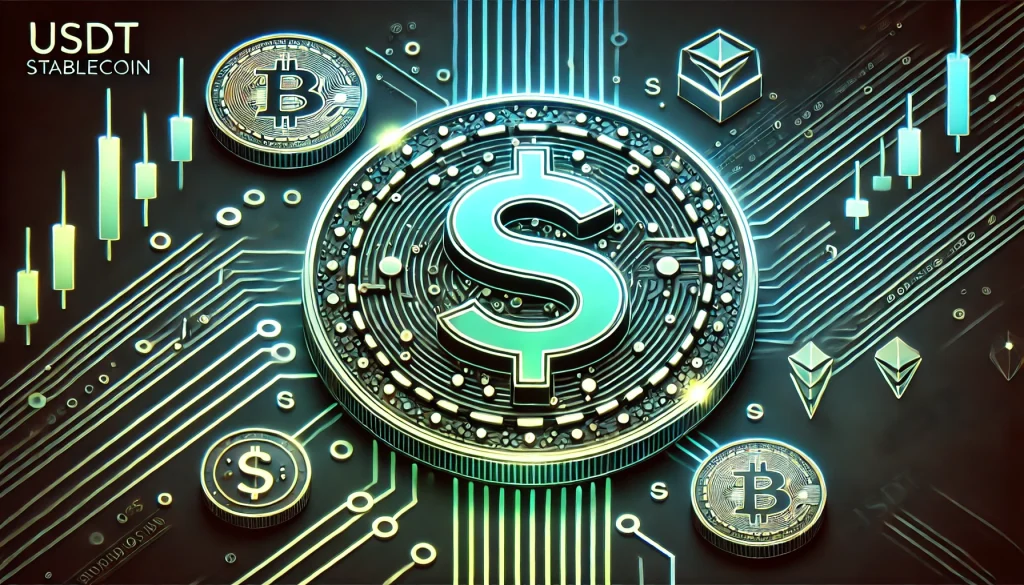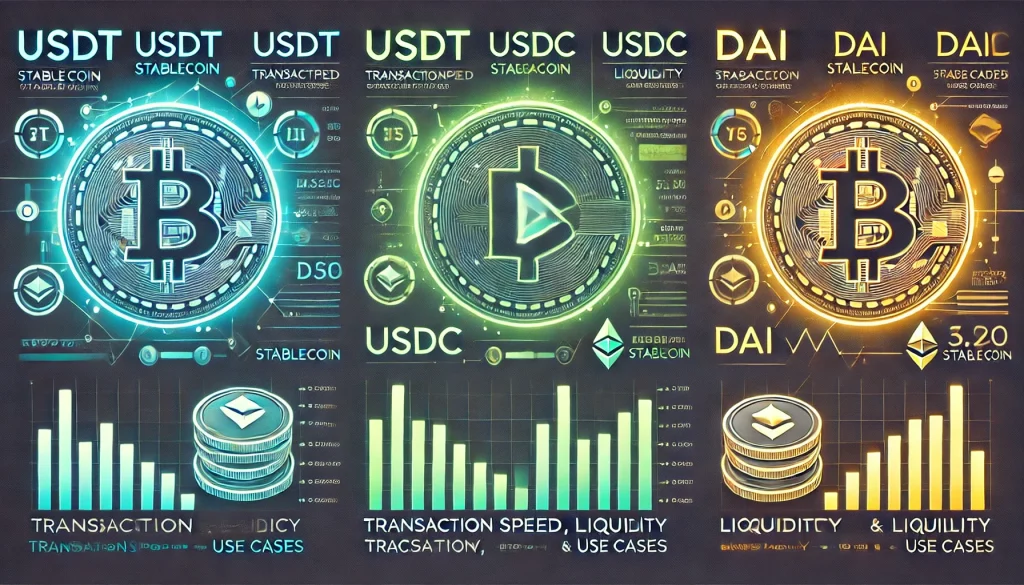USDT Worth the Hype?
As cryptocurrencies continue to shape global finance, stablecoins like USDT stand out as popular options. In this article, we take an in-depth look at Tether’s USDT, one of the most widely used stablecoins pegged to the U.S. dollar, promising stability amid a highly volatile digital market. This review examines Tether’s performance, security, and usability, aiming to provide clarity on whether it is an ideal choice for both novice and seasoned cryptocurrency enthusiasts.

Overview
Tether (USDT) is a blockchain-based stablecoin designed to maintain a 1:1 value ratio with the U.S. dollar, meaning 1 USDT equals approximately 1 USD. Unlike many volatile cryptocurrencies, It offers a stable value, making it highly attractive for digital transactions and trading. Introduced in 2014 by Tether Limited, USDT aims to provide a stable digital asset that bridges traditional financial systems and the crypto world, acting as a “digital dollar.” The coin is supported on multiple blockchain platforms, including Ethereum and Tron, giving it wide accessibility.
Key Features of USDT
- Pegged Value: Maintains a 1:1 ratio with USD, minimizing volatility.
- Multi-Blockchain Support: Available on Ethereum, Tron, and other blockchains.
- Wide Acceptance: Accepted across various crypto exchanges, wallets, and merchant platforms.
- Fast Transaction Speed: Enables quick transfers, making it ideal for traders and crypto users.
It provides a digital representation of the U.S. dollar within the crypto ecosystem, allowing users to trade without converting into fiat currencies. The coin is ideal for traders looking to stabilize their portfolios in turbulent markets.
USDT Pros and Cons
Benefits and drawbacks of USDT vary depending on the user’s intent and familiarity with cryptocurrency markets. Let’s break down these key elements.
| Pros | Cons |
|---|---|
| Stable Value: Pegged to USD, reducing volatility. | Centralized Nature: Managed by Tether Limited, raising transparency concerns. |
| High Liquidity: Readily available on major exchanges. | Regulatory Uncertainty: Subject to potential government scrutiny. |
| Multi-Blockchain Support: Offers flexibility across networks. | Reserve Questions: Questions on whether Tether holds sufficient USD reserves. |
| Efficient Transactions: Fast transfers make it user-friendly. | Limited Profit Potential: Lacks the price growth potential of volatile cryptocurrencies. |
Despite being a popular choice, Tether still faces criticism, primarily around its centralization and questions regarding its reserves. However, its stability remains unmatched in the digital asset space.
Breaking Down USDT: Performance, Usability, and Stability
When evaluating USDT, it’s essential to examine its performance, design, and functionality, as these elements impact its utility and appeal.

Design and Concept
The core principle behind it’s stability, achieved by maintaining a consistent 1:1 value with the USD. Unlike Bitcoin or Ethereum, which are subject to significant price fluctuations, It provides users with a predictable value tied to fiat currency. The design goal here is straightforward: offer a stable store of value within the volatile world of crypto.
Performance and Functionality
In terms of functionality, It excels as a stable and reliable digital asset. It facilitates transactions without the need for banks, appealing to individuals in countries with volatile fiat currencies. Transactions with USDT are notably swift and cost-effective, especially on the Tron network, where transaction fees are lower than Ethereum’s.
- Stability: Tether has successfully maintained its peg to the USD, giving it a reliable value anchor.
- Transaction Speed: Transactions are typically processed within minutes, providing efficient, near-instant transfers.
- Multi-Blockchain Support: With availability on blockchains like Ethereum, Tron, and Solana, users have more flexibility in using USDT.
Usability in Wallets and Exchanges
Iis widely accepted on major cryptocurrency exchanges and compatible with numerous wallets. This ease of use enhances its popularity among traders seeking a way to quickly transition between fiat-pegged assets and cryptocurrencies without the need to cash out into traditional currencies. Its functionality extends to DeFi (Decentralized Finance) applications, further solidifying its role within the crypto landscape.
For anyone seeking a stable, fiat-backed asset to participate in crypto markets or usdt to usd conversions without traditional banking hurdles, Tether provides a robust, easy-to-use solution.
How Does USDT Compare to Other Stablecoins?

As the most widely adopted stablecoin, Tether holds a unique position, yet it faces competition from alternatives like USDC (USD Coin) and DAI. Each stablecoin brings distinct features to the table, making it crucial to examine how USDT stacks up.
| Feature | USDT | USDC | DAI |
|---|---|---|---|
| Pegged to USD | Yes | Yes | Yes |
| Issuing Entity | Tether Limited | Circle, Coinbase Consortium | Decentralized on Ethereum |
| Reserves | Partially Audited | Fully Audited | Decentralized Collateral |
| Blockchain Support | Multiple (Ethereum, Tron, etc.) | Primarily Ethereum | Ethereum-based |
| Decentralization | Centralized | Centralized | Decentralized |
Among these, USDT remains a top choice due to its high liquidity and acceptance, though USDC offers higher transparency with frequent audits. DAI is favored by those who prioritize decentralization, though it’s more complex to use.
Reaction to Massive $5B Stablecoin Surge
Crypto is buzzing as USDT and USDC pump $5.4 billion into the market post-election, sparking discussions on what this means for future asset buys. With $41 billion in liquidity now primed for investment, Twitter users are sharing their thoughts on how this “dry powder” might fuel the next wave of digital asset demand.
Conclusion
In summary, Tether’s USDT is a powerful tool for anyone looking to mitigate crypto volatility while retaining the benefits of digital assets. USDT’s accessibility, fast transactions, and stable value make it an ideal asset for traders and investors looking to manage risk. However, transparency concerns and regulatory uncertainties still raise questions. Overall, USDT is a valuable asset in a crypto portfolio, especially for those who value stability.
FAQ
What is USDT currency?
USDT, or Tether, is a cryptocurrency that maintains a stable value by being pegged to the U.S. dollar. It’s widely used as a digital dollar, enabling users to trade and hold assets without the volatility seen in other cryptocurrencies. For a more detailed look, refer to Investopedia’s explanation on Tether USDT.
How does USDT maintain its value?
USDT maintains its value by holding reserves that back each issued token with an equivalent amount in USD. This setup ensures that 1 USDT remains equal to 1 USD. Tether Limited manages these reserves, which adds stability but has faced questions regarding full transparency.
Is USDT safe to use in a wallet?
Yes, USDT is safe to use in many reputable cryptocurrency wallets, such as Trust Wallet and MetaMask, thanks to its compatibility with Ethereum, Tron, and other networks. However, users should always choose secure wallets and follow best practices for protecting their digital assets. You can find further guidance in Forbes’ Tether Overview.
References
- Forbes. What is Tether USDT?
- Interactive Crypto. Tether USDT Review 2024: All You Need to Know Before Buying Tether
- Investopedia. What is Tether (USDT)?
- YouTube. Understanding Tether (USDT) – Complete Guide
- Crypto TownHall. Latest insights on USDT

